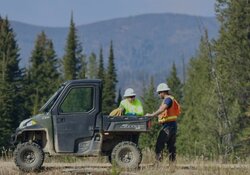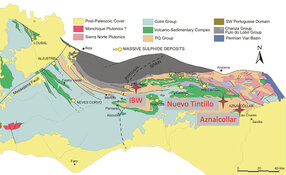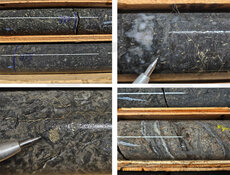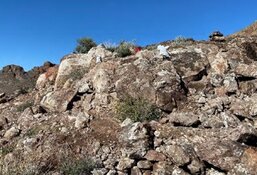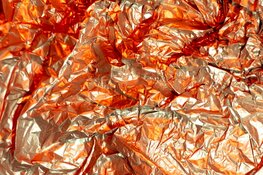The Gold Report: When we interviewed you in April, you said the pending demise of zombie companies on the Australian Stock Exchange (ASX) was a good thing because there were too many deadbeats in the specialty metal sector. Has that process worked its way through the system or are there still some "walking dead" making it difficult for investors to pick out the promising companies?
Richard Karn: Unfortunately, the latter is still the case. According to the Australian Securities & Investment Commission (ASIC), 146 companies in the mining sector went into administration (bankruptcy) during the fiscal year ending June 30, 2014. As Luke Smith pointed out last month in your publication, yet another 226 resource companies did not have sufficient cash to meet their anticipated expenditures for this quarter.
Since then another 23 resource companies have failed, and as of Aug. 25, 2014, 17 more had not paid their listing fees and were suspended from trading on the ASX.
So, no, we do not think the process is over.
TGR: How are companies accessing capital today?
RK: By and large, they're not. We've been picking up on some positive activity in the base and precious metal sectors, but that mostly has yet to trickle through to the specialty metal sector.
"Alkane Resources Ltd. increased gold reserves by 47% this year."
In the case of specialty metal companies, most are unable to raise money either from the capital markets or from their shareholders. Failed or abysmal uptake of rights issues and the like continue to be common. Many companies are literally being starved of cash.
TGR: Can companies sell some of their assets to cover costs on other projects?
RK: Asset sales are difficult in the current environment because so many companies are now so desperate to sell that it has become a buyers' market. That being said, the Chinese have been stepping in to snap up the occasional bargain.
TGR: If companies have no more options, how long can they keep the lights on?
RK: Not long. The end of the quarter is September 30, and companies will have to disclose their financial situations. We expect a fresh wave of failures within the next six to eight weeks as more resource companies become insolvent.
"Carbine Tungsten Ltd.'s use of a WHIMS unit could potentially boost recoveries by $8M worth of tungsten."
We don't know what the catalyst will be, but for some time we've been expecting a final selling frenzy that will mark at least an intermediate-term bottom in the specialty metal sector.
Some assets are so mispriced that the market appears to be pricing in failure well before the fact. In fact, so sure is the market that a number of these companies will fail that they are trading for less than the cash they have on hand, literally placing no value whatsoever on their resource projects.
Final washouts often occur when markets are oversold, and the specialty metal sector remains oversold. The spark for the selloff could be another failed rights issue or poor uptake on an option scheme, either of which would reflect a fundamental lack of confidence in management.
It could be some unknown—perhaps an otherwise meaningless threshold event—that "spooks the herd," and shareholders just start selling everything indiscriminately to ensure they recover some of the money they've invested.
It could be that it finally dawns on investors that a number of these junior resource companies hold a lot of each other's stock, which they are carrying on their balance sheets at par as a liquid asset when in actuality those shares are so illiquid they could not be sold except at a steep discount—and could well crash the share price in any case.
As I said, we do not know what will spark the selloff—just that it is coming.
And when the selling has been exhausted, it will constitute at least an intermediate bottom in the specialty metal sector.
In the final shakeout, we are anticipating a number of mismanaged companies will deservedly go under—as, unfortunately, will some quite good companies—and some very good projects will be picked up very inexpensively.
"Mandalay Resources Corp. has an antimony-gold project in Costerfield, Victoria, that we like a great deal."
And being able to pick up outstanding assets for very little money always marks the bottom of the cycle, because it increases the odds of success as the cycle turns up again.
TGR: What characteristics should investors look for to avoid these doomed ventures?
RK: At the moment I would avoid small-cap specialty metal companies that are carrying any debt, especially if they are not cash-flow positive. If or when their ability to service that debt is called into question, it will likely be too late to get out.
In addition to reading financial statements to get a grasp of their financial situations and those circumstances just mentioned, I would look at what managements are actively doing to help their long-suffering shareholders.
For example, have they reduced staff, cut expenditures and taken a cut in salary themselves or are they still maintaining a "resource boom" lifestyle at their shareholders' expense?
Most important, I would look for either positive cash flow from operations or sufficient cash on hand to sustain operations through to some pivotal event the market has been waiting for, such as commencing production, receiving project funding, permits or approvals, or receiving the results of a bankable feasibility study, etc.—something that will demonstrate management is delivering on its promises.
TGR: Can you share a couple of examples?
RK: In the zirconia, ferroniobium and rare earth element space, we continue to like Alkane Resources Ltd.'s (ANLKY:OTCQX; ALK:ASX) Dubbo Zirconia project, which is probably the most intriguing resource we have encountered in Australia and can be thought of as an exchange-traded fund for the specialty metal space. The New South Wales planning and environmental departments have just conditionally approved the Dubbo Zirconia project, which clears the way for existing memorandums of understanding with off-take and processing partners to be converted into contracts, and enables Alkane to commence the financing and development stages for the slightly less than $1 billion ($1B) project.
Helping to fund these efforts, Alkane's Tomingley gold project is performing above design specifications, and the company has reduced all-in cash costs to approximately $900/ounce ($900/oz) and increased gold reserves by 47% this year. As the ratio of tons mined (overburden) to tons milled is optimized, which is expected to be completed by Q1/15, profitability should increase further—all things being equal. Tomingley will produce roughly $15 million ($15M) in free cash flow this year and then $20–25M per year over the next eight years of visible mine life.
In the graphite space, we continue to like Valence Industries Ltd. (VXL:ASX), which has been making significant progress in putting the Uley graphite project on the Eyre Peninsula back into production. Following hard on the outstanding infill drill results announced last month, which have significantly increased the grade of the project, as well as identifying a new high-grade deposit, Valence announced a $12M private placement with institutional and sophisticated investors on Sept. 18, 2014, as well as a $3M underwritten rights issue for existing shareholders. In this market, we find this remarkable, especially in light of the company listing in January of this year and having appreciated more than 350% year to date.
The funds will be used to revise the bankable feasibility study to incorporate the new data, which is likely to significantly reduce the operating expenditures on the project; to initiate baseline civil works and infrastructure development for phase 2; and to order long lead-time items. Management remains confident it will be able to fund the $34M capital expenditures for the second plant by means of a combination of prepaid off-take agreements and contract factor agreements.
Phase 1 is awaiting receipt of the revised regulatory works approval from the South Australian government to commence production. All in all, Valence is firing on all cylinders.
TGR: What about companies that could have cash flow in the near future?
RK: A number of companies are at, or approaching, positive cash flow and have projects either fully funded, in production or nearing some critical milestone that will be very positive for their share price.
Carbine Tungsten Ltd. (CNQ:ASX) has been processing tailings and operating at break-even to get its tungsten product into the hands of end-users, primarily Mitsubishi, for more than two years now. The company has demonstrated market acceptance of the product and that it can process even tails profitably. Carbine has been optimizing the use of a Wet High Intensity Magnetic Separation (WHIMS) unit to recover the ultrafine material, which could potentially boost recoveries by an additional $8M worth of tungsten just from the tailings operation.
But the near-term driver will be Carbine completing an off-take agreement(s) or funding agreement(s) with tungsten end-user(s), which will see the project move into phase 2. That will be roundly profitable, and set up a return to full-scale hard rock mining at Mt. Carbine in phase 3. Management is confident it will secure this funding by the end of this calendar year, and doing so would be a huge accomplishment in this market and would drive a significant revaluation in the share price.
And I am compelled to add that tungsten is a metal we believe is going to do very well in the years ahead, not least because it is arguably the most important specialty metal to the military—and there is a lot of militarization going on globally at the moment.
Another company we have followed primarily for its SCONI (scandium-cobalt-nickel) project is Metallica Minerals Ltd. (MLM:ASX), but the key to the company's profitability in the intermediate term and potentially its long-term success is the recently signed $7.5M joint venture (JV) with a private Chinese firm to put Metallica's Urquhart Point heavy mineral sands (zirconia and rutile) and bauxite project into production.
Although Urquhart Point, which is near Weipa, Queensland, is a relatively small project, it will pay for itself within a year and is expected to deliver more than $7M of undiscounted cash flow over the next five years—even at these depressed heavy mineral sands prices. The joint venture covers a 300-kilometer stretch of coast that has numerous heavy mineral sands and bauxite targets, so there is substantial upside.
Two aspects of the deal, however, particularly intrigue us. Metallica was able to get the deal done for "project equity," which in this case amounts to 50% of the proceeds in return for funding the project. In this environment that strikes us as a far better approach than diluting its shareholders. But we believe the JV's true long-term value resides not as much in the potential profits but in that it may demonstrate that Metallica can indeed transition from "project incubator" to actual miner. In this regard, Urquhart Point is a litmus test, and a successful outcome would go a long way in providing capital markets with sufficient confidence to fund its quarter-billion dollar SCONI project.
For something a little different, Mandalay Resources Corp. (MND:TSX), which has operations outside our geographic purview in South America, has an antimony-gold project in Costerfield, Victoria, that we like a great deal. With North American and European markets hungry for non-Sino antimony supply, we believe shareholders would be well served, and that the market would place a substantially higher value on Costerfield, if it were spun off as a pure play. We've spoken with company executives about this periodically over the years, and they admit to having considered it. Were that announced, we would buy Mandalay expressly for the spin-off because antimony is another specialty metal we believe is poised to do very well in the years ahead.
TGR: What if someone just wanted to take a chance? What possible underdogs are out there that could hit big?
RK: There are a couple "lottery tickets" we like at these levels. These are companies that have seen their share prices decimated over the last two to three years as they have fallen out of favor with their shareholders for any number of reasons, such as management missteps, excessive equity dilution, poor cost controls, an inability to fund projects or the failure to deliver on grandiose promises.
Fundamentally, however, we believe they have a sound, significant specialty metal resource.
Investors should not lose sight of the fact that potentially economic specialty metal projects are few and far between—or that specialty metal demand is discovery-driven rather than GDP-correlated, which effectively means that it often does not require much new marginal demand, or conversely much curtailing of supply, to affect a substantial price shock in the specialty metal itself.
If these companies can summon the financial wherewithal to weather the next year or so, and if they can start delivering on their promises, they could be huge winners.
One company we've been following for some time is Arafura Resources Ltd. (ARU:ASX), which has a large rare earth elements (REE) project, Nolans Bore, north of Alice Springs in the Northern Territory. Arafura has more than $20M in cash, so it is not in any immediate danger, but for a project that will run to $1.4B to put into production, it is certainly not without risk.
Arafura has made great strides recently to bring project costs down to that figure by revising its approach. Instead of the costs, both in terms of logistics and capital expenditure, attendant to building a processing plant in Whyalla, South Australia, as originally envisaged, Arafura will now process its ore on-site to produce a REE chloride concentrate it will ship abroad for final refining.
There are two advantages to this: By producing an upgraded chemical concentrate, Arafura dramatically reduces the volume transported, and it can now remove and contain the radioactive material on-site. We think this latter development will prove to be a very wise decision because it neatly sidesteps a significant issue we have long had with another Australian REE producer currently shipping ore abroad for processing—namely, the looming nightmare of dealing locally with the radioactive waste residues.
Over the next 12–18 months, there are a couple of potential catalysts that could materially impact Arafura. The first would be an equity investment from a strategic partner, which would likely be attended by a binding off-take arrangement for its REE products. The second would be significant process improvements from the optimization program it is currently conducting in China. Any material reduction in capital and/or operating costs is likely to be favorably received by the market.
Another lottery ticket is Platina Resources Ltd. (PGM:ASX), a somewhat cash-strapped exploration and development company that has found the largest, second highest-grade lateritic scandium resource in the world.
Platina has been in the news a great deal since mid-July because it has signed not one but two nonbinding heads of agreement (HOAs) with Chinese companies to supply them with a cumulative 20 tons of scandium oxide over an unspecified period of time. That sparked a more than 300% run in Platina's shares in the span of about a week before the share price drifted back down to about twice its launch point.
The waning enthusiasm may reflect the lack of details, which have been sketchy at best, but from what we can ascertain, Platina plans to concentrate its ore on-site by a factor of roughly three. It then plans to ship the concentrated ore by rail to Newcastle, New South Wales, then by ship to China, and then by rail again inland to these Chinese companies' processing plants. Even after upgrading, this will entail the logistical cost of moving a substantial amount of material, and there has been no explanation regarding how shipping a concentrated ore such vast distances for someone else to process can be profitable.
Also of concern is the fact that a company cannot take more than 20,000 tons of ore out of the ground in New South Wales without a mining permit, which to the best of our knowledge Platina has yet to apply for. The same goes for its environmental permit, native heritage work, etc., and these permits take time, realistically a minimum of 12 to 18 months, if not longer judging from the experience of Alkane Resources and others.
All that being said, we have made no secret that we believe Australia will develop the first scalable, primary scandium mine in the world, and the formalization of the HOAs into binding contracts, especially if attended by some kind of equity investment, would be very positive for Platina and its share price.
TGR: Could the recent repeal of the mining tax in Australia help all of these companies, or will it only impact large operators?
RK: The Minerals Resource Rent Tax (MRRT) did not apply to the specialty metal end of the resource sector in Australia, so its repeal will have little direct impact on these companies.
Indirectly, however, repealing the tax serves returns Australia to the ranks of the safest, most mining-friendly jurisdictions in the world, and at some point that will indeed lead to increased investment flows into the specialty metal sector.
What markets fail to fully appreciate is that many, and arguably most, of the technological advances we enjoy today, whether found in consumer electronics or transportation or renewable energy sources or military hardware, rely on secure, uninterrupted supply of a range of specialty metals.
With military conflict raging across the Middle East and North Africa; a full-fledged arms race between the countries with claims to the South China Sea, notably China and Japan; and the numerous potential conflicts brewing throughout the world, now more than ever secure supply of these specialty metals should be a very high priority. Should a war erupt, common sense, as well as history, dictates the first victims will be the very notion of globalization, free market economics and "just in time" delivery.
If it were in China's strategic interests to stop exporting rare earth elements or tungsten or antimony or graphite, to name just a few of the specialty metal markets China controls, all of which are crucial to a range of military applications, there is absolutely nothing anyone could do about it.
Of the 50 specialty metals we track, more than 40 could be mined economically in Australia alone, thanks to its unique geology.
We've been writing about this trend for more than six years now, but except for a relatively brief period from mid-2010 through late 2011, in the panicked response to China cutting off supply of REEs to Japan, the aftermath of the global financial crisis has squelched the market's appetite for mining projects in general and specialty metal projects in particular. They require the long-term commitment of capital and a sustained effort to put into profitable production.
The flood of liquidity sloshing around the planet since 2008 in search of a return appears to have such a short investment horizon that mining projects are largely off the radar.
So nothing has been done. There's been a lot of talk, a lot of bureaucratic posturing and comic sputtering as World Trade Organization complaints are ignored or unfair business practices perpetuated, but nothing has been done. And the longer this continues, the more vulnerable the West becomes.
The specialty metal price spike the West suffered in 2010–2011 in panicked response to the Chinese curtailing exports of REEs will be nothing compared to what a "shooting war" would provoke.
Thinking otherwise is the height of naiveté.
TGR: Thank you for your insights.
 As managing editor of The Emerging Trends Report, Richard Karn has a broad, multidisciplinary background and a working knowledge of precious and specialty metals, as well as considerable research, analytical and writing experience. The first nine Emerging Trends Reports have been reevaluated and updated published in e-book form, as Credit & Credibility. He has written for publications ranging from Barron's, Kitco and Fullermoney to Financial Sense Online.
As managing editor of The Emerging Trends Report, Richard Karn has a broad, multidisciplinary background and a working knowledge of precious and specialty metals, as well as considerable research, analytical and writing experience. The first nine Emerging Trends Reports have been reevaluated and updated published in e-book form, as Credit & Credibility. He has written for publications ranging from Barron's, Kitco and Fullermoney to Financial Sense Online.
Read what other experts are saying about:
Want to read more Gold Report interviews like this? Sign up for our free e-newsletter, and you'll learn when new articles have been published. To see recent interviews with industry analysts and commentators, visit our Streetwise Interviews page.
DISCLOSURE:
1) Richard Karn: I own, or my family owns, shares of the following companies mentioned in this interview: Alkane Resources Ltd., Valence Industries Ltd., Carbine Tungsten Ltd. and Platina Resources Ltd. I personally am, or my family is, paid by the following companies mentioned in this interview: None. My company has a financial relationship with the following companies mentioned in this interview: None. I was not paid by Streetwise Reports for participating in this interview. Comments and opinions expressed are my own comments and opinions. I determined and had final say over what companies would be included in the interview based on my research, understanding of the sector and interview theme. I had the opportunity to review the interview for accuracy as of the date of the interview and am responsible for the content of the interview.
2) The following companies mentioned in the interview are sponsors of Streetwise Reports: Alkane Resources Ltd., Carbine Resources Ltd. and Mandalay Resources Ltd. The companies mentioned in this interview were not involved in any aspect of the interview preparation or post-interview editing so the expert can speak independently about the sector. Streetwise Reports does not accept stock in exchange for its services.
3) Interviews are edited for clarity. Streetwise Reports does not make editorial comments or change experts' statements without their consent.
4) The interview does not constitute investment advice. Each reader is encouraged to consult with his or her individual financial professional and any action a reader takes as a result of information presented here is his or her own responsibility. By opening this page, each reader accepts and agrees to Streetwise Reports' terms of use and full legal disclaimer.
5) From time to time, Streetwise Reports LLC and its directors, officers, employees or members of their families, as well as persons interviewed for articles and interviews on the site, may have a long or short position in securities mentioned. Directors, officers, employees or members of their families are prohibited from making purchases and/or sales of those securities in the open market or otherwise during the up-to-four-week interval from the time of the interview until after it publishes.


